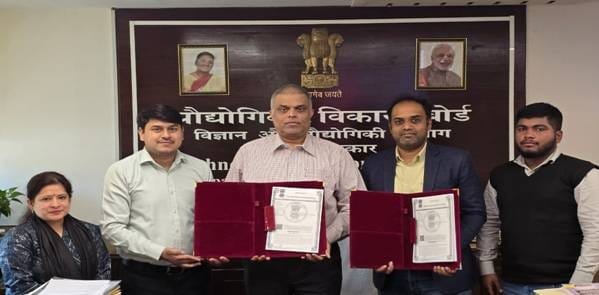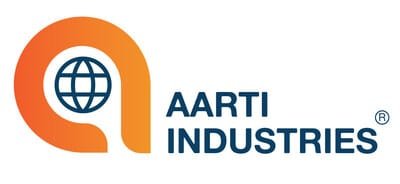Coal companies are deploying modern equipment
Seven projects have been approved under the Rs.8,500 crore financial incentive scheme to promote coal and lignite gasification in the public and private sectors, Minister of Coal and Mines G. Kishan Reddy said in a written reply in Rajya Sabha on 21 July https://www.commerce.gov.in/.
These are:
Category I – with a provision of Rs.4,050 crores under which only PSUs were entitled to apply, a total of three projects with Government assistance of Rs.1,350 crores each have been approved.
Category II – with a provision of Rs.3,850 crores under which both private sector and PSUs were entitled to apply, a total of three private sector projects with Government assistance amounting to Rs.1,983.06 crores have been approved.
Category III – with a provision of Rs.600 crores for demonstration or small-scale projects, one private sector project with Rs.100 crores of Government assistance has been approved .
The Government has approved the scheme on 24 January 2024.
The Government has also approved investment by Coal India Limited (CIL) in joint ventures of Coal India Limited – Bharat Heavy Electricals Limited (CIL-BHEL) and Coal India Limited – Gas Authority of India Limited (CIL-GAIL) for undertaking coal gasification projects. Both JV companies have now been established.
In 2022, a new sub-sector, “Production of Syngas leading to coal gasification,” was created under the Non-Regulated Sector (NRS) linkage auctions policy to support coal gasification initiative http://coal.nic.in.
The Government has allowed coal supply to gasification projects under the NRS auction with a floor price at the notified price of the regulated sector, for the projects commissioning within the next seven years.
50% rebate in the revenue share for coal used in gasification has been introduced in commercial coal block auctions, provided that at least 10% of the total coal production is used for gasification purposes.
A framework has been established for granting waivers from registration for Transfer of Technology (ToT) from land-border-sharing countries on a case-by-case basis. Waiver to one application has been granted.
Strategies for Coal Sector Sustainability and Competitiveness
India has the world’s 5th largest coal reserves to contribute to the country’s energy security and it accounts for 55% of the country’s energy needs. India’s energy mix is diverse, but dominated by coal, which fuels a significant portion of the country’s electricity generation.
While renewable energy sources like solar and wind are growing rapidly, they still constitute a smaller share of the overall energy mix compared to coal https://sbi.com.in/.
The country is actively working to diversify its energy sources and increase its reliance on renewables to meet rising energy demands and address climate change concerns.
Considering the global shift towards cleaner energy sources and the need to reduce carbon emissions, the Government has undertaken the following strategic initiatives to ensure the long-term sustainability and competitiveness of country’s coal sector:
Greening Initiatives — Bio-Reclamation/Plantation: The Coal/Lignite PSUs have been constantly making efforts to minimize the footprints of coal mining through sustained reclamation and afforestation of areas in and around their operating mines https://www.nseindia.com/.
Energy Efficiency Measures: Coal and Lignite PSUs have been taking various energy conservation and efficiency measures over the years to reduce carbon intensity such as replacement of conventional lights with LED lights, installation of energy-efficient air conditioners, super fans, deployment of Electric Vehicle (EVs) and installation of efficient water heaters, energy-efficient motors for pumps, auto timers in street lights etc.
Efficient utilization of mine water: Mine water after the application of appropriate treatment methods is utilized for various purposes such as – community supply for domestic and irrigation purposes, industrial use for dust suppression, plantation, firefighting, machinery washing, sprinkling in underground workings, creation of recreational areas, fish farming, and groundwater recharge etc. Coal and Lignite PSUs have also entered into an MoU with the respective State Governments for community water supply https://www.bseindia.com/.
Gainful Utilization of Overburden: Extracting sand from Over Burden (OB) for construction and stowing material supports sustainable development by providing affordable sand and reducing the land required for OB dumps. As of March 2024, Coal and Lignite PSUs have commissioned 4 OB processing plants and 5 OB to M-Sand Plants. This initiative not only helps reduce environmental pollution, improve the riverine ecosystem, enhance water flow, and boost groundwater recharge, but also provides a cheaper alternative for construction sand.
Green Credit Programme: Coal PSUs are also participating in extensive plantation under Green Credit Program launched by MoEF&CC.
First Mile Connectivity (FMC) projects: The Coal PSUs have taken steps to upgrade the mechanized coal transportation and loading system under ‘First Mile Connectivity’ projects. Commissioning of FMC projects in coal mining areas reduces consumption of diesel significantly and therefore reduces carbon emissions.
Deployment of blast-free technology in coal mining: Coal companies are deploying modern equipment having environment-friendly features, like Surface Miner, Continuous Miner in coal mining, which eliminates the drilling, blasting and crushing operations in coal and hence, in turn, obviates pollution caused due to these operations. Rippers are also being deployed for blast-less removal of overburden in some mines.
Renewable Energy and clean coal initiatives: Coal PSUs have also started commissioning Renewable Energy power projects. Additionally, they are venturing into various clean coal technologies like Coal gasification, Coal Bed methane (CBM) etc.
As per the current import policy, coal is kept under Open General Licence (OGL) and consumers are free to import coal from the source of their choice as per their contractual prices on payment of applicable duties. Due to concerted efforts of the government, the import of coal has reduced from 264.5 MT in 2023-24 to 243.6 Mt in 2024-25 http://iea.org.
For reducing dependence on imported coal and promoting domestic production, the Government has taken the following measures:
i. Reducing the reliance on imported coal by boosting domestic production – This was done by facilitating allocation of coal blocks, encouraging private sector participation and streamlining the process for obtaining necessary approvals for coal mining projects. Additionally, the thrust is on increasing coal production by government coal companies by introduction of modern technologies like First Mile connectivity (FMC) and digitalization.
ii. Encouraging the domestic coal consumption – Towards this, an Inter-Ministerial Committee (IMC) was constituted for coal import substitution. IMC, through its various meetings, has identified Import Coal Based (ICB) plants where the supply of domestic coal may be examined. These plants have indicated their specific coal requirements and preferred CIL subsidiaries.
iii. Focusing on improving coal evacuation infrastructure and coal supply chain – In line with Government of India directives, Coal companies have undertaken improvement in coal transportation and supply chain efficiency through construction of new Railway lines and First Mile Connectivity (FMC) projects in a phased manner.
iv. As regards fiscal measures, under the Revised Shakti Policy, 2025, the Imported Coal Based (ICB) Plants are allowed to secure coal under Window-II of the Policy. Fiinews.com










